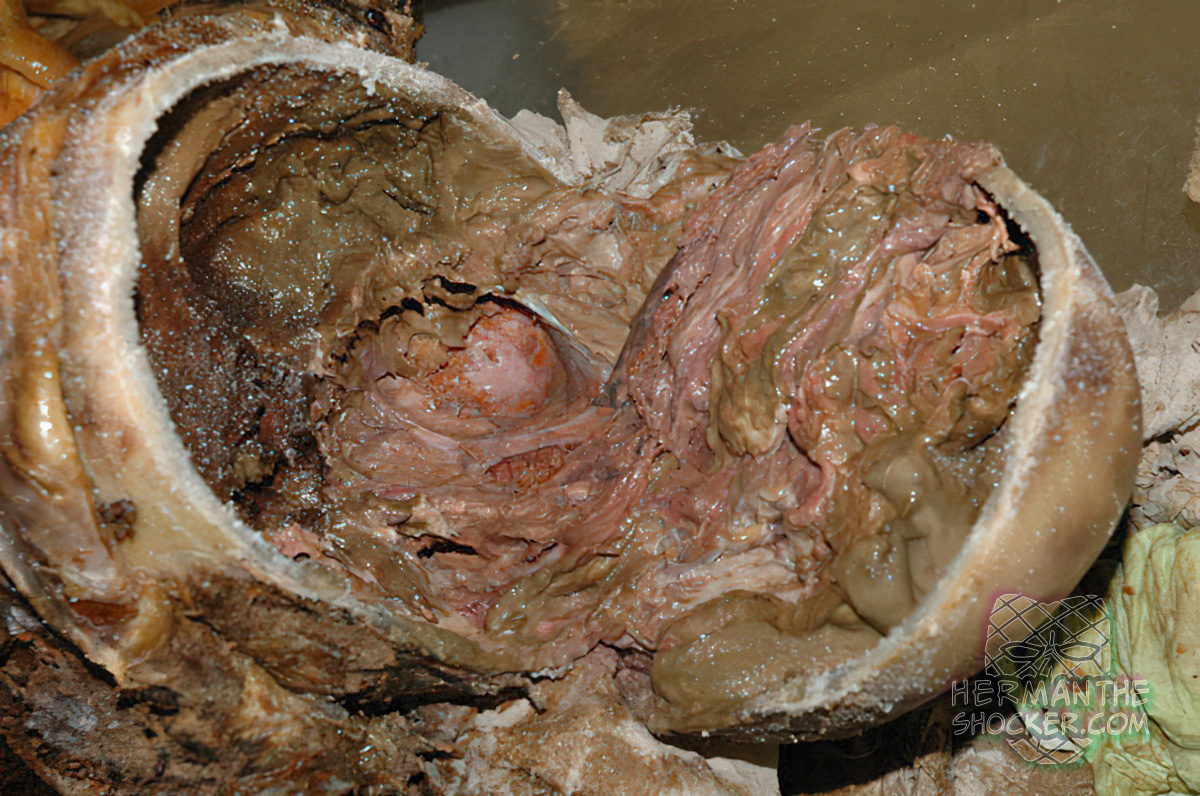Brain tissue that has undergone pulp-like transformation (burial time, 7 weeks). In the case of a naturally mummified body, putrefaction, autolysis, as well as possible animal predation and mummification processes take place simultaneously. When this is the case, mummification, that is to say, the drying out of tissue, inhibits other decomposition processes. Brain tissue often takes on a pulp-like consistency within days or weeks, making a differentiated assessment impossible.
Latest posts

This individual died and his body was scavenged by a cat, no further info. The phenomenon of postmortem…

Note the bloating and decompositional blisters as well as the greenish discoloration around the area of the abdomen.…






